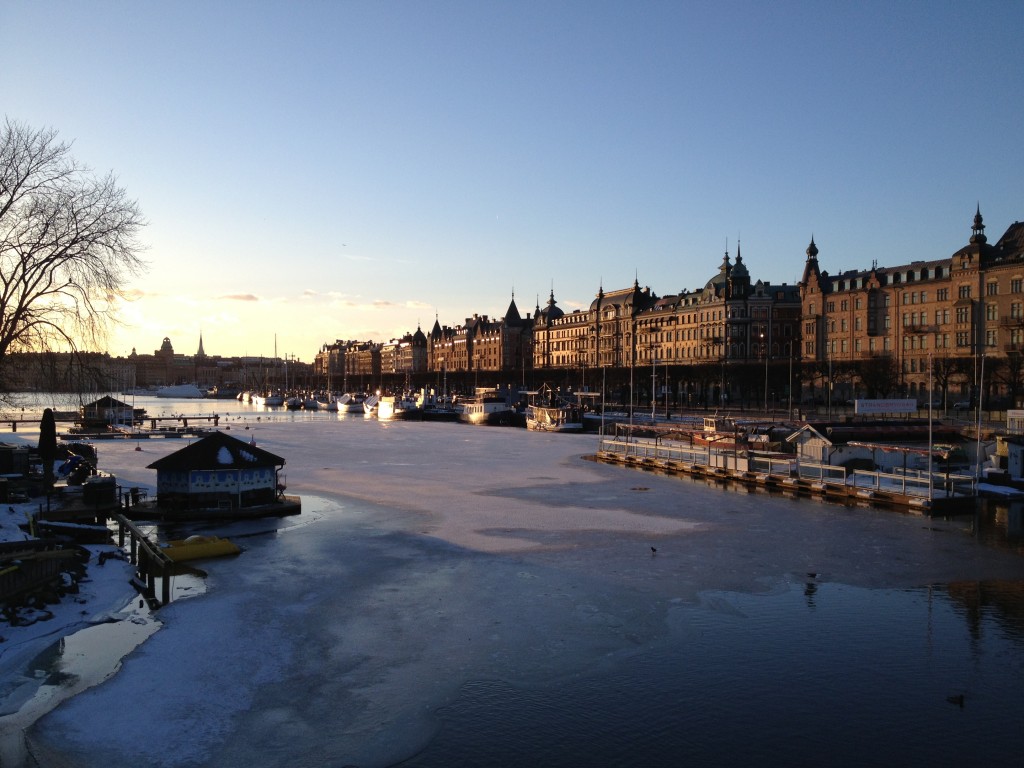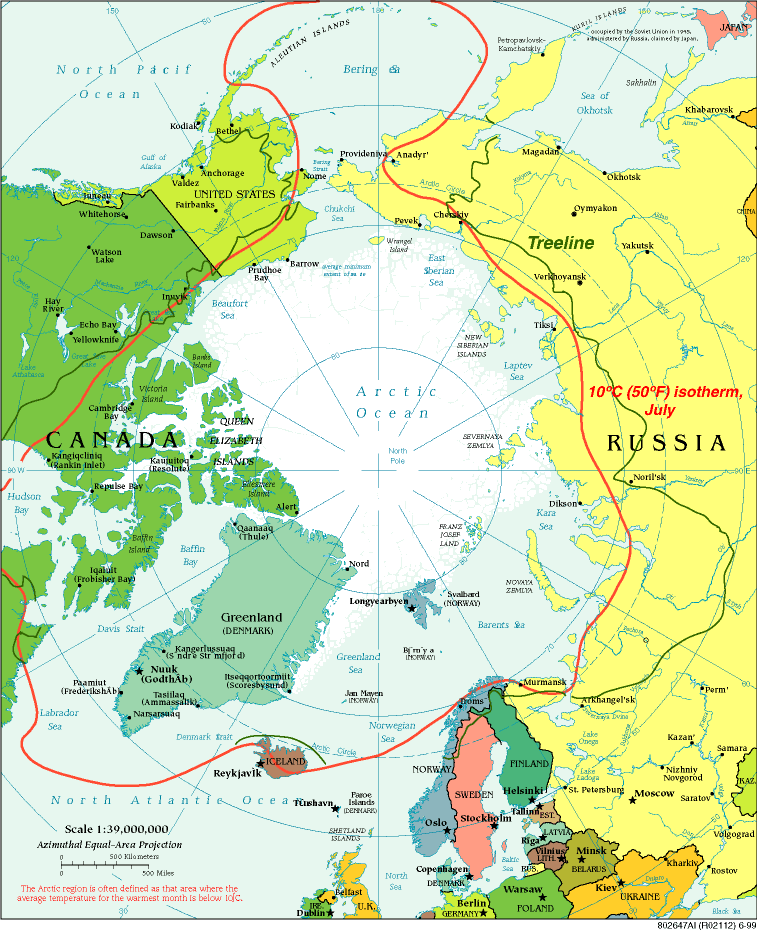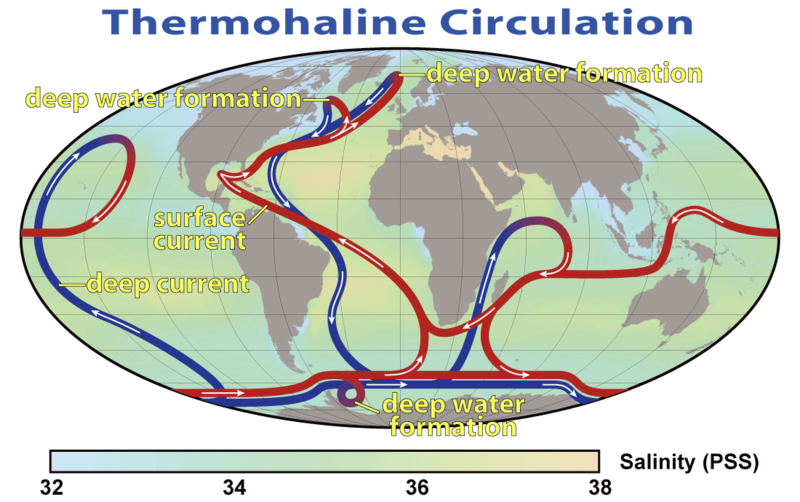The equatorial water flow mystery
The sink water spin mystery from DW_Global Ideas on Vimeo.
Our reporter Joanna was very surprised when she found out which way water drains away when she was filming at the Equatorial Line in Uganda. Can you guess what happened?
![]() read more
read more
Exploring the North (1): The Arctic circle

Freezing temperatures, darkness, vast icy landscapes – that’s what I’m expecting within the next days as I journey northwards through Sweden and Norway. Maybe those are just stereotypes I have as I travel towards the Artic circle (and actually even cross it into the Artic region). I’ll soon find out. But I’d like to take you along on my exciting journey.

Credit: Map courtesy The Perry-Castañeda Library Map Collection. Treeline added at NSIDC based on information from National Geographic 1983, Armstrong et al. 1978, and Young 1989.
What is so special about the Arctic circle?
The circle of 66,65° latitude (commonly) defined as the Arctic circle, above which the sun doesn’t rise or set for at least 24 hours a year. In fact, in most regions these states last for several month of the year. Additionally, temperatures can fall below -70 degree Celsius and usually do not rise higher than 10 degrees in summer. That may not sound very comforting. But, actually there are several animals, plant species (there are more than 400 flowers that can only be found North of the Arctic circle) and people who live and flourish here – traditionally as well as for research purposes.
Because living beings have to be well-adapted to such tough conditions in order to survive, the regions and its inhabitants are especially sensitive to changes due to global warming. Scientific measurements showed that temperatures in the polar regions are two to three times quicker than in other regions. That is why it is said to be the planet’s early warning system.
What’s next on this journey?
I’d like to show you how a relatively rich country like Sweden harnesses green energy sources – and why some people protest against it. In addition, I hope to introduce to you some non-human climate rescuers.
You can follow my journey here on the Global Ideas Blog and see my travel route on this map:
Journey to the Arctic circle auf einer größeren Karte anzeigen
(Green icons: been there, blue icons: places to visit later on)
Climate champ – giving a voice to remote communities

Saurav Dhakal from Nepal
Do you feel responsible for our future? Are you tired of waiting for a breakthrough at climate conferences? If you are already taking action yourself, you are our ClimateChamp and we want to get to know you! Answer our questionaire to become a part of our new blog series, take your chance to be nominated as a Climate Champ.
What is your name? How old are you? And where do you live?
My name is Saurav Dhakal. I’m 33 years old. I live in Kathmandu, the capital of Nepal. But I frequently travel around the mountain communities of the country.
How does climate change affect your everyday life in your community?
We live in the mountains and so climate change affects us very closely. Right now I live in the capital city without electricity. But Nepal does have a plentiful water supply. People in the mountains generally don’t have much access to basic needs such as food, electricity, drinking water, healthcare or education. So it becomes very hard to adapt especially in the face of growing climate change.
What trigger event led you to start fighting climate change?
As a journalist, I’ve worked on different stories related to environment and climate. Gradually I realized that the stories related to these issues did not get much attention in the media. Then I started a new approach to make those issues prominent. Basically, I make stories accessible to the mainstream via my websitewww.storycycle.com
How exactly do you fight climate change?
“Story Cycle” helps storytellers from different communities to develop, produce and disseminate their own stories. These films allow people to explore different topics, including how the changing climate is impacting them and their families, how they are coping, and what they need to do in order to adapt. We listen and capture multimedia stories from the community and disseminate them to the world via our website (www.storycycle.com), our partners in mainstream media agencies and public showings. We also use other conventional ways such as multimedia magazines, MMS, and DVD clips for distribution to communities without Internet access. A story cycle is complete when stories flow from the source to the masses and then return to their origin. Recently, I visited 22 districts in Upper Hills and in the mountains of Nepal. I collected thousands of photos, videos, stories and anecdotes about the vulnerability and struggles of Himalayan communities. I want to create an extensive multimedia database from all this. It is supposed to be a tool for the government of Nepal and the people of the world to showcase the plight of the Himalaya and Himalayan communities as a result of climate change. Such communication tools will also help Nepal in international climate negotiations.
![]() read more
read more
We want you, Champ!
Do you feel responsible for our future? Are you tired of waiting for a breakthrough at climate conferences? If you are already taking action yourself, you are our ClimateChamp and we want to get to know you!
 Global Ideas is one of the world’s most comprehensive TV & multimedia projects on climate protection. We want to find people, who are not prepared to accept climate change, but take action against it!
Global Ideas is one of the world’s most comprehensive TV & multimedia projects on climate protection. We want to find people, who are not prepared to accept climate change, but take action against it!
We need you imaginative people with clever projects who are ready for duty to combat climate change all around the world. We may cover the consequences of climate change but our clear focus is on potential solutions. To date we have produced more than 1000 video documentaries, features, reports, analysis and web specials in 5 languages. We have a steadily growing online and social media audience, including almost 60,000 facebook fans and more then 1000 twitter followers.
So answer our questionnaire below and send it to us. Some pictures of yourself and your project – perhaps even a movie clip – would be great too. Please send them to coolerworld@dw.de and we give you the platform to show to the world that you are a real ClimateChamp!
Is the ocean to quit it’s job?
Silently and mostly unrecognized, ocean is doing a yet quiet good job for the climate: it absorbs CO2 from the atmosphere and dumps it into the deep. That is one of the reasons, why climate did not further heat up within the last decade – although world keeps emitting lots of CO2.
But now researchers found that the Atlantic ocean absorbs less CO2 than usually – and also figured out the reason for this. It’s because the so called “meridional overturning circulation” slows down. Before you now think “I’ll never get this” – hang on. Sounds more complicated than it actually is.
The overturning circulation works like this: In the Atlantic ocean, water flows northwards – from the warmer Southern part into the colder Northern part. There, the water cools down, becomes saltier and sinks into the deep. There this so called deepwater flows back towards the South, warms up there and is welling up in consequence. Back at the surface in the Southern hemisphere it is, where ocean water takes up the antropogenic CO2.
Now, due to global warming, also ocean surface water – even in the Northern usually colder part of the Atlantic – warms up – and does not sink to the deep. This in turn slows down the overturning circulation. In consequence of this slowing, CO2-saturated water is not dumped into the deep as usual, but stays rather close to the surface. In consequence, less CO2 can be taken up from the atmosphere.
So the research team scientifically proved that we actually are destroying those natural systems that normally help keeping CO2 levels low – by emitting more and more CO2 and warming up the planet with its ocean.









Feedback